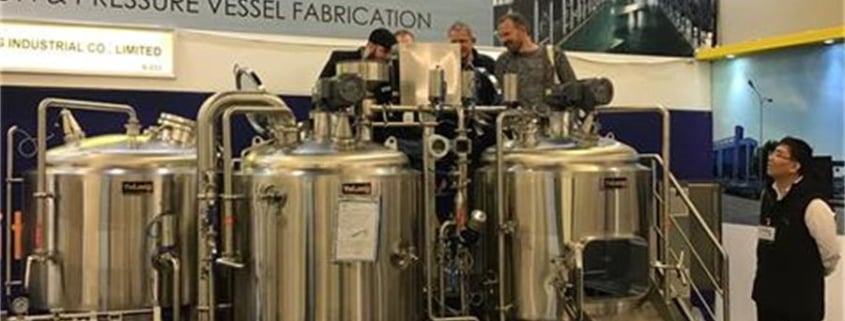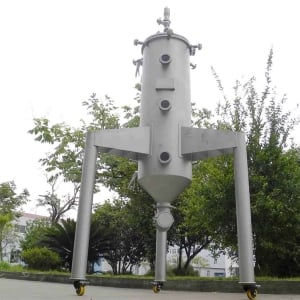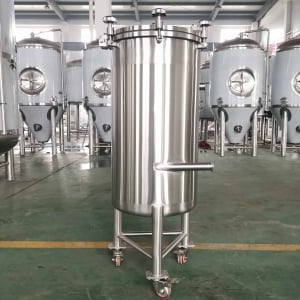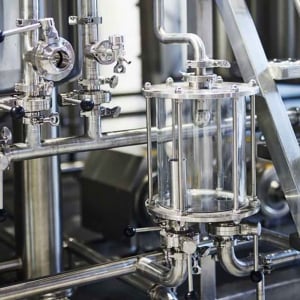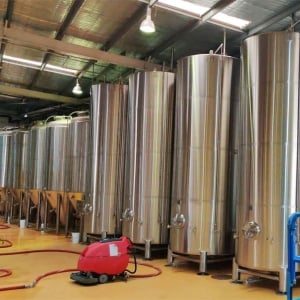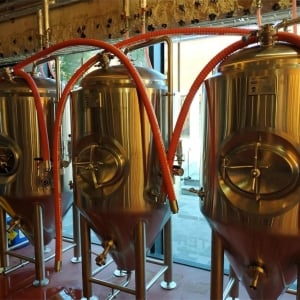3 Vessel Brewing System
Dreaming of brewing craft beers that rival your favorite pub? Then a 3 vessel brewing system might be your ticket to sudsy nirvana. This setup offers homebrewers a significant step up in precision and control over the brewing process, compared to single vessel systems. In this guide, we’ll delve into the world of 3 vessel brewing, exploring its intricacies and helping you decide if it’s the right choice for your home brewery.
What is a 3 Vessel Brewing System?
A 3 vessel brewing system, as the name suggests, consists of three separate kettles:
- Hot Liquor Tank (HLT): This vessel heats your brewing water to precise temperatures.
- Mash Tun (MT): Here, you mix your grains with the hot water to extract sugars and flavors.
- Boil Kettle (BK): The wort (sugar-extracted liquid) is transferred here for boiling and hop addition.
How Does a 3 Vessel Brewing System Work?
The magic of a 3 vessel system lies in its ability to separate the mashing and boiling processes. This allows for finer control over each stage, resulting in a more consistent and flavorful beer. Here’s a simplified breakdown of the brewing process:
- Heating Strike Water: Fill the HLT with water and heat it to a specific temperature, depending on the desired beer style.
- Mashing: Transfer the hot water to the mash tun, where it is mixed with crushed grains. This initiates the enzymatic conversion of starches into fermentable sugars, which will eventually become alcohol. Precise temperature control during mashing is crucial for extracting the desired flavors and aromas from the grains.
- Sparging: After the mashing period, hot water (sparge water) is sprayed over the grains in the mash tun to rinse out any remaining sugars. The HLT comes in handy here, as you can maintain a consistent temperature for the sparge water, ensuring optimal extraction efficiency.
- Wort Boiling: The collected sugary liquid (wort) is transferred to the boil kettle. Here, the wort is boiled to sterilize it, concentrate its sugars, and add bitterness and hoppy flavors from hops.
- Fermentation and Bottling/Kegging: After boiling, the wort is cooled and transferred to a fermenter where yeast is added. The yeast consumes the sugars and produces alcohol and carbon dioxide, transforming the wort into beer. Finally, the finished beer is bottled or kegged for enjoyment.

Features of a 3 Vessel Brewing System
- Precise Temperature Control: Separate kettles allow for independent temperature control in each stage, crucial for optimal enzyme activity during mashing and proper hop utilization during boiling.
- Improved Efficiency: By separating mashing and boiling, you can extract more sugars from your grains, leading to higher beer yield and a more robust flavor profile.
- Enhanced Versatility: The ability to precisely control temperatures opens up a wider range of brewing styles to explore, from delicate lagers to robust imperial stouts.
- Simplified Cleaning: Each vessel has a dedicated purpose, which can streamline the cleaning process compared to single vessel systems.
3 Vessel Brewing System Equipment Guide
While the core components remain the same across different systems, 3 vessel brewing systems come in various configurations and with a range of features. Here’s a breakdown of the typical equipment you’ll encounter:
| Equipment | Description |
|---|---|
| Hot Liquor Tank (HLT) | Typically made of stainless steel, the HLT heats and stores hot water for mashing and sparging. Heating elements can be electric or gas-fired. Some HLTs feature recirculation pumps for maintaining consistent water temperature. |
| Mash Tun (MT) | The mash tun is where the grains are steeped in hot water for mashing. It’s also where sparging occurs. Mash tuns can be insulated to help maintain mashing temperatures. They may also have features like false bottoms to help separate the grain bed from the wort during lautering (wort collection). |
| Boil Kettle (BK) | The boil kettle is where the wort is boiled with hops. Similar to the HLT, boil kettles can be electric or gas-fired and may come with features like volume markings and hop cones or screens for easier hop addition and removal. |
| Pumps | Some systems incorporate pumps to transfer liquids between vessels and for recirculating mash water during the mashing process. Pumps can save time and effort compared to gravity-fed systems. |
| Controllers | Controllers regulate the temperature of the HLT and boil kettle, ensuring precise temperature control throughout the brewing process. |
Capacity Considerations
The size (volume) of your 3 vessel brewing system is a crucial factor. Here are some key points to consider:
- Batch Size: Homebrew recipes typically specify the volume of wort needed for a single batch of beer. 3 vessel systems come in a range of sizes, from compact setups suited for 5-gallon batches to larger systems capable of handling 10 gallons or more. Consider your typical batch size and how much finished beer you plan to produce regularly.
- Available Space: These systems can have a significant footprint, so measure your brewing area carefully. Factor in not just the kettles themselves, but also the space needed for hoses, pumps, and other equipment.
- Scalability: If you envision brewing larger batches in the future, a system with a bit of headroom in terms of capacity might be a wise investment.
3 Vessel Brewing System Prices
3 vessel brewing systems range in price depending on factors like size, features, and brand. Here’s a general breakdown to give you an idea:
| Capacity | Price Range |
|---|---|
| Up to 5 Gallons | $1,500 – $3,000 |
| 5 – 10 Gallons | $2,000 – $5,000 |
| 10 Gallons and Up | $4,000+ |
Remember, these are ballpark figures. Prices can vary depending on specific features and materials used. Some high-end systems with advanced automation and bells and whistles can reach up to $10,000 or more.
Installation, Operation, and Maintenance
Installing a 3 vessel brewing system typically involves setting up the individual kettles, connecting them with hoses and valves, and configuring any controllers or pumps. While some systems may require some plumbing expertise, most are designed for homebrewer assembly with clear instructions.
Operating a 3 vessel system requires familiarity with the brewing process. Thankfully, there are many resources available online and in homebrew communities to guide you. Here’s a basic rundown of the ongoing tasks:
- Pre-Brew Cleaning: Sanitize all equipment thoroughly before each brewing session to prevent contamination.
- Brew Day: This is where the magic happens! Follow your chosen recipe and operate the system according to the manufacturer’s instructions.
- Post-Brew Cleaning: Clean the kettles, pumps, hoses, and other equipment to remove wort residue and prevent future sanitation issues.
Choosing a 3 Vessel Brewing System Supplier
With a wide range of 3 vessel brewing systems available, selecting the right one for you can feel overwhelming. Here are some tips to streamline your search:
- Identify Your Needs and Budget: Consider your desired batch size, features, and budget before you start shopping.
- Research Reputable Brands: Look for established brands with a history of producing quality brewing equipment.
- Read Reviews and Comparisons: Online reviews and comparisons from other homebrewers can offer valuable insights.
- Consider Customer Service: A company with responsive and knowledgeable customer service can be a valuable asset, especially for new brewers.
Pros and Cons of 3 Vessel Brewing Systems
Pros:
- Precision and Control: Separate kettles allow for fine-tuned temperature control during mashing and boiling, leading to a more consistent and flavorful beer.
- Improved Efficiency: By separating mashing and boiling, you can extract more sugars from your grains, resulting in higher beer yield and a more robust flavor profile.
- Enhanced Versatility: The ability to precisely control temperatures opens up a wider range of brewing styles to explore.
- Scalability: Some systems can be easily expanded with additional kettles or accessories to accommodate larger batch sizes in the future.
Cons:
- Cost: 3 vessel brewing systems are a significant investment compared to single vessel systems.
- Complexity: Operating a 3 vessel system requires a deeper understanding of the brewing process compared to simpler setups.
- Space Requirements: These systems can have a larger footprint, so make sure you have the space to accommodate them comfortably.
- Cleaning: Cleaning multiple kettles can be more time-consuming compared to single vessel systems.
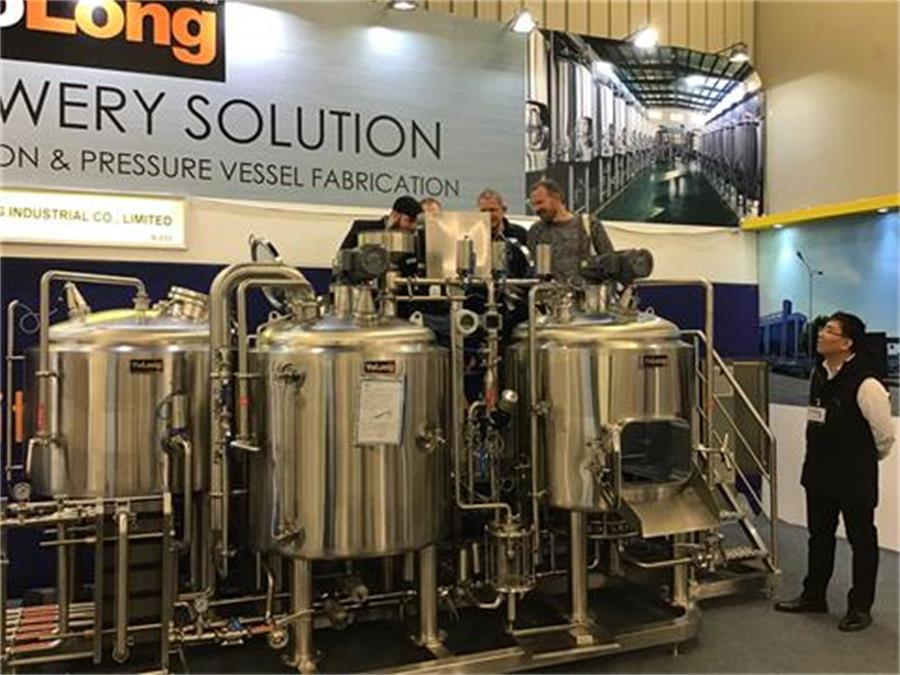
FAQ
Q: Is a 3 vessel brewing system worth it?
A: If you’re a serious homebrewer who desires greater control over the brewing process and wants to experiment with a wider range of beer styles, then a 3 vessel system can be a worthwhile investment. However, if you’re just starting out or are on a tight budget, a simpler single vessel system might be a better entry point.
Q: What’s the difference between HERMS and RIMS systems?
A: Both HERMS (Heat Exchanger Recirculation Mash System) and RIMS (Recirculating Infusion Mash System) are advanced brewing techniques used in some 3 vessel systems to achieve even more precise temperature control during mashing. Here’s a breakdown of the key differences:
- HERMS: This system utilizes a heat exchanger, typically a coil immersed in the HLT, to indirectly heat the mash liquor recirculated from the mash tun. By controlling the temperature of the HLT water, you can precisely regulate the mash temperature. HERMS systems can offer high efficiency and precise temperature control.
- RIMS: A RIMS system continuously pumps mash liquor through a heating element immersed directly in the mash tun. The temperature of the heating element is controlled to maintain the desired mash temperature. RIMS systems are known for their simplicity and ability to quickly adjust mash temperatures.
Here’s a table summarizing the key differences between HERMS and RIMS:
| Feature | HERMS | RIMS |
|---|---|---|
| Heating Method | Indirect (Heat Exchanger) | Direct (Heating Element) |
| Location of Heating Element | In HLT | In Mash Tun |
| Temperature Control | Precise | Precise, with ability for quick adjustments |
| Complexity | More Complex | Simpler |
| Cost | Typically More Expensive | Typically Less Expensive |
Choosing between HERMS and RIMS depends on your priorities and budget. HERMS offers the ultimate in temperature control but can be more complex and expensive. RIMS offers a good balance of simplicity, affordability, and precise temperature control.
Q: Can I upgrade a single vessel system to a 3 vessel system?
A: In some cases, yes. Some homebrewers have successfully converted coolers or kettles into additional vessels for mashing or sparging. However, this can be a DIY project requiring some plumbing and fabrication skills. It’s important to ensure all modifications are food-grade safe and can withstand the heat of brewing.
Q: How do I dispose of the leftover grain after brewing?
A: The leftover grain after brewing, called spent grain, can be a valuable resource. It can be composted, used as a soil amendment, or even be used to bake bread! There are many online resources with creative ways to reuse spent grain.
Conclusion
The world of 3 vessel brewing systems offers exciting possibilities for homebrewers seeking to elevate their craft. By understanding the intricacies of the system, weighing the pros and cons, and choosing the right equipment for your needs, you can embark on a journey of brewing exceptional beers that rival your favorite pub offerings. Remember, homebrewing is a fun and rewarding hobby, and a 3 vessel system can be a powerful tool to help you unleash your inner brewmaster. So, happy brewing!

